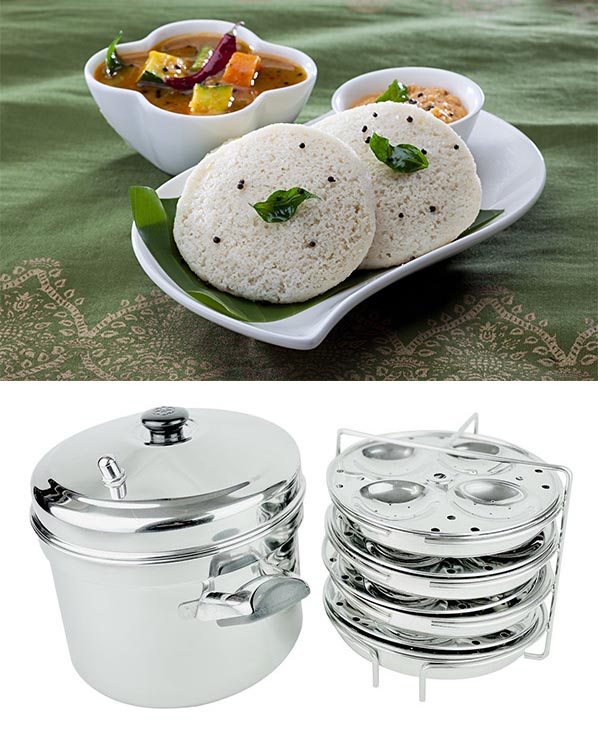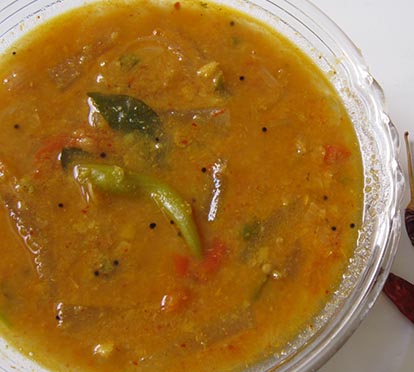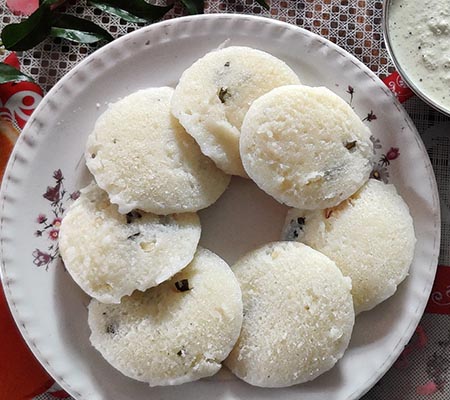Giddy About Idly: Celebrating World Idly Day

Idlis (also known as Idly) are small snacks, made from a white batter whipped out of rice and lentil, which are then soaked, ground, fermented, and steamed. Idlys are usually eaten with a variety of dips and chutneys and can be eaten at any point of the day, with breakfast, lunch, dinner, and for a snack!
Here at Cooksmill, we want to celebrate World Idly Day by taking a look into the history of the popular snack and exploring some of the best ways to make idli at home and how to present it and a way that is sure to wow customers and guests.
History of Idly
Food historians believe that idli first originated in Indonesia, which is known for its tradition of fermenting food. However, idlis in the form that we recognise them today came from India sometime during the period of 800-1200 CE. Since the beginning idli has been made using rice as a batter and fermenting the snack and steaming it until it resembles a fluffy cloud.
World Idli Day became recognised after a popular idli caterer, Eniyavan, made over 1300 varieties of idli on March 30, 2015. He also made a huge 44-kilogram idli that was cut and shared by Indian government officials at the time.
Idli is considered to be one of the healthiest snack foods to originate from South India, due to the unique preparation of fermenting and steaming which enhances the nutrients in the rice. It is also great for healthy diets, and as it contains no meat or dairy, it is a popular choice amongst those with restricted palettes or on meat and dairy-free diets.
Making Idly from scratch
Over the decades and centuries, many different methods of idli preparation have emerged. Making idlis is like making anything else that is seeped in history and tradition. Everyone will have their own preferred methods and techniques. If you’re just starting, or have never made idlis before, here is a simple recipe to get you started.
Cooksmill sells a stainless steel Idli Cooker with 4 plates, which allows you to make 16 idlis. Simple idli rice can be used to make idli batter, idli rice is parboiled rice designed specifically for idli making. Ural dal, also known as black gram, urad beans and black matpe beans, are also added. Wash and rinse the rice and urad dal a couple of times with fresh water and soak them separately for 4 to 5 hours. Then, mix the urad dal and rice and grind the batter using a table top stone grinder, or pestle and mortar. For each half cup of urad dal, add about 1 cup of water during the grinding process. For 2 cups of rice, add between 1.5 to 2 cups of water.
After the grinding of the batter has been done, allow it to ferment. To do this, leave the mixture overnight for at least 9 hours until the batter doubles or triples in size. Warm temperatures are recommended for good fermentation. Simply fill the mould with the idli batter and steam the batter in the cooker. The idli can then be removed from the cooker and served with whatever sides and chutney you desire!

Sambar Recipe
Sambar is a popular accompaniment for Idly. There are many variants of Sambar, depending on location and personal preference, but here is a simple Sambar recipe that can be adjusted and changed over time, to get you started.
Ingredients:
1/3 cup Toor Dal (split pigeon peas)
1/4 teaspoon Turmeric Powder
1 cup chopped Mixed Vegetables
1/2 teaspoon Mustard Seeds
5-6 Curry Leaves
1-2 Dry Red Chillies
A pinch of Asafoetida
1 medium Onion, finely chopped (approx. 1/3 cup)
1 tablespoon Sambar Powder
1/2 tablespoon Seedless Tamarind
1 tomato, finely chopped (approx. 1/3 cup)
1 tablespoon oil
1 cup + 1½ cups Water
1 tablespoon finely chopped Coriander Leaves
Salt

Directions:
Step one: prepare Tamarind juice. Soak the tamarind in 3 tablespoons of hot water for 10,15 minutes, mash it with a spoon and then drain using a sieve. Discard the solids.
Step two: Add toor dal, turmeric powder and 1 cup of water in a pressure cooker or large pan (3-4 litres of water). Add mixed vegetables of your choice in a small container inside the cooker and place the lid on top of the pan/cooker for 5-6 minutes on medium heat.
Step three: Turn off the flame and allow the mixture to stand until it cools naturally. Remove the container of vegetables and mash the dal.
Step four: Heat 1 tablespoon of oil in a pan over a medium flame. Add mustard seeds, curry leaves, dry red chillies, and asafoetida and saute for 10-15 seconds. Then, add chopped onions. Continue sauteing until the onion turns transparent.
Step five: Add tamarind juice, and cook for 2-3 minutes. Then add chopped tomatoes. Saute until the tomatoes turn soft, then add sambar powder.
Step six: Stir and cook the mixture for a minute.
Step seven: Add cooked and mashed dal from earlier, the boiled vegetables from earlier, 1 and a half cups of water and salt for taste.
Step eight: Mix well and boil until it turns frothy, this usually takes around 5-8 minutes.
Step nine: Transfer the sambar into a serving bowl and garnish with finely chopped coriander leaves.
Serving Idly
Idli itself can be served in whatever way you want. From simple white crockery for the idli, to steel bowls and ramekins for the sides, sambar and chutney, there’s no limit to the possibilities of presentation. We also sell a range of pickle trays, which are great for presenting multiple different sauces and dips at once.
If you’re serving idly to go, we have a range of takeaway containers that would comfortably fit a portion of idly, with sides and chutneys. Satco containers are a popular choice, thanks to their securely fitting lids and ideal sizes. Explore our entire disposable food serving category here for your best fit.

Sign up to Cooksmill's Newsletter!
Receive all the latest offers, competitions, new products, and current blogs.

